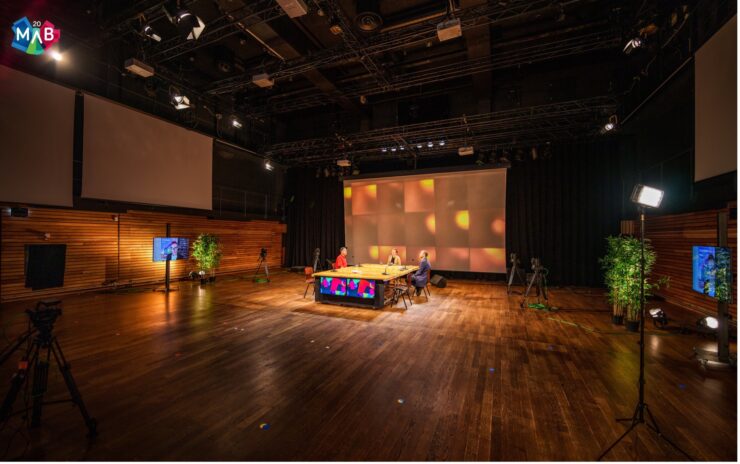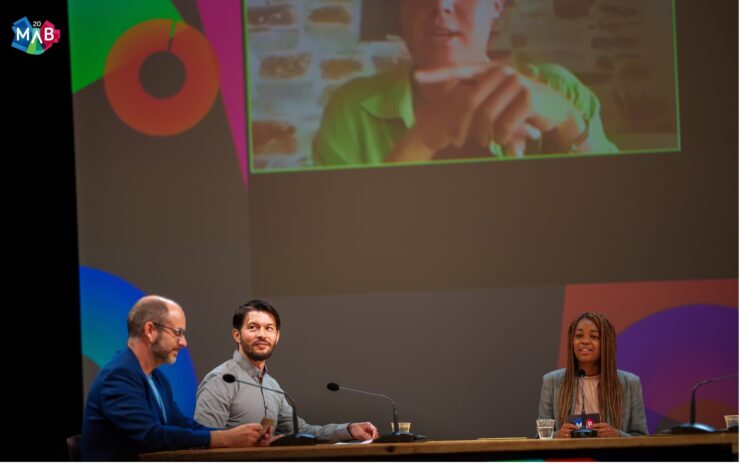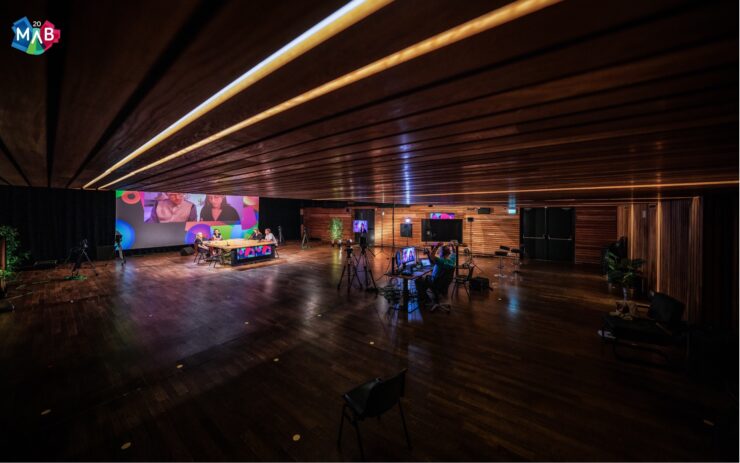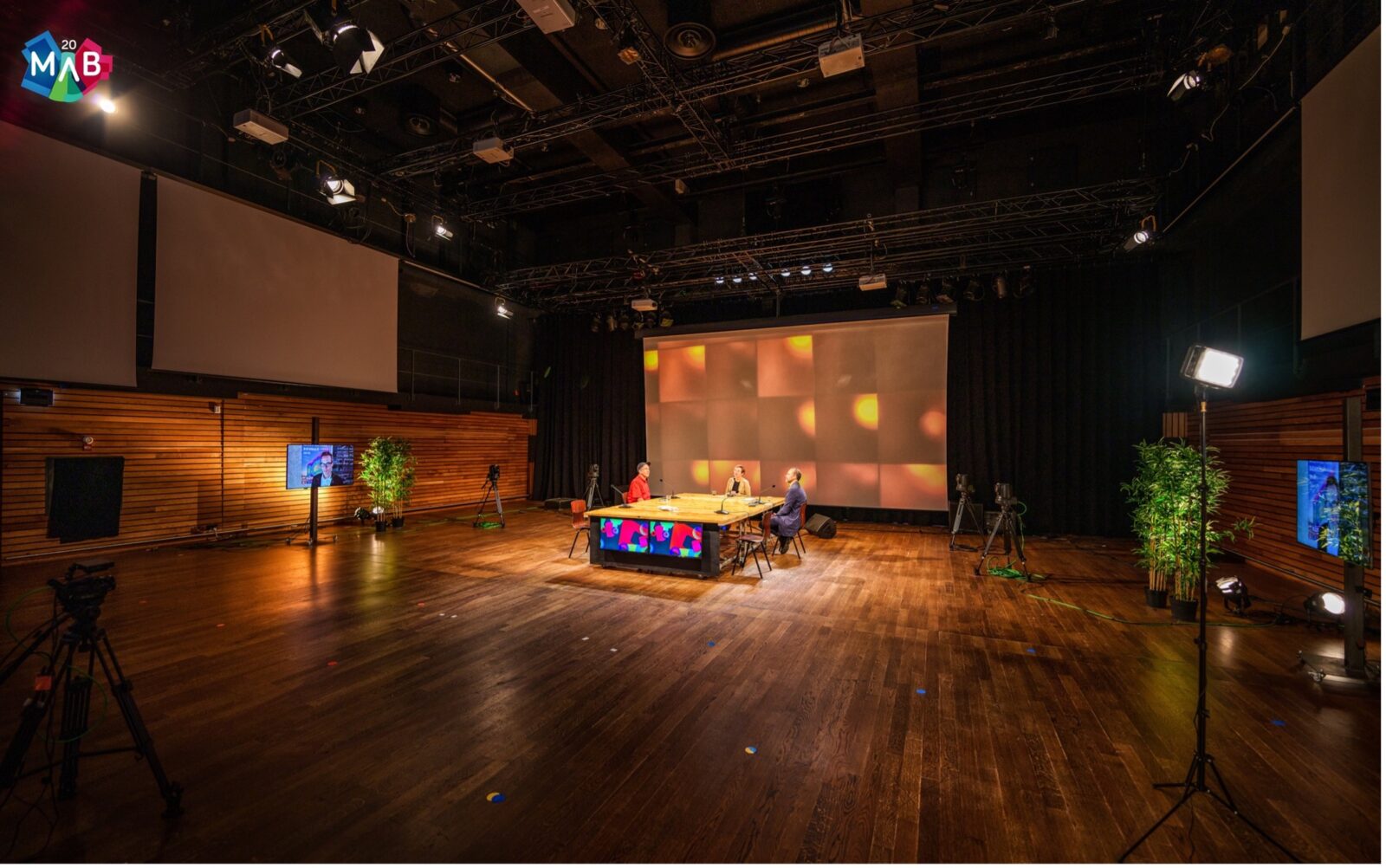[urban interfaces] Blogs
Playful Cities report of MAB20
The following report was written for the Playful City S.I.G., which is part of the Utrecht University-based Focus Area on Game Research:
The Media Architecture Biennale (MAB20) took place from June 24th – July 2nd 2021, and was organized by Utrecht University (UU) and the University of Applied Science in Amsterdam (AUAS). MAB20 was organized by the Special Interest Group The Playful City: towards playful urban futuring, with kind financial support from the Utrecht Center for Game Research. The event hosted around 550 people, who participated in 15 workshops, and another 600+ people from around the world attending the online conference, with almost 150 speakers, 42 online conference sessions, featuring inspiring and thought-provoking presentations. Due to the ongoing global pandemic, the Media Architecture Biennale had to be adapted and re-imagined. Therefore, the MAB20 Program took place online, with LIVE studio hosting and presentations from Pakhuis De Zwijger in Amsterdam.
 The Media Architecture Biennale brings together practitioners in the emerging field of media and architecture, urban interaction design, digital placemaking, urban media art and urban informatics. As a discipline, media architecture was initially concerned mostly with the integration of displays and interactive installations into architectural structures, like media facades and urban screens. However, over the years the discipline has grown much broader, as new technologies such as digital platforms and smart city technologies have increasingly made their way into the experience, management and design of cities. This edition of the Biennale focussed primarily on issues of public values in the smart city. As we design and adapt new technologies, in turn these technologies shape our cities. What future scenarios are implied in today’s urban technologies? And how can we shape our technologies to respond to their surroundings, contributing to cities that are both socially and ecologically sustainable?
The Media Architecture Biennale brings together practitioners in the emerging field of media and architecture, urban interaction design, digital placemaking, urban media art and urban informatics. As a discipline, media architecture was initially concerned mostly with the integration of displays and interactive installations into architectural structures, like media facades and urban screens. However, over the years the discipline has grown much broader, as new technologies such as digital platforms and smart city technologies have increasingly made their way into the experience, management and design of cities. This edition of the Biennale focussed primarily on issues of public values in the smart city. As we design and adapt new technologies, in turn these technologies shape our cities. What future scenarios are implied in today’s urban technologies? And how can we shape our technologies to respond to their surroundings, contributing to cities that are both socially and ecologically sustainable?

The theme of play and games featured prominently in this edition of the Media Architecture Biennale. One of the five subthemes was called Playful & Artistic Civic Engagement. Smart Cities need media architectures that not just increase efficiency, but instead need technologies that create meaningful experiences. As an alternative, ‘playful cities’ promote a people-centric view of the smart city in which citizens themselves learn, negotiate and create innovations through play and games. Shaping our urban futures is a challenge of the imagination rather than a technological challenge. To become serious about our planetary urban future, we need imaginative gameful tools and playful interventions. The session Happy People Architectures, for instance, addressed how playful experiences may help improve neighborhoods and living conditions. The keynote speech by Brazilian architect en urban scholar Guilherme Wisnik highlighted how playful civic protests have emerged on the streets of Brazilian cities, as a way of claiming the right to public spaces. The workshop Playful experience through interactive sonic design in virtual environments, looked at the ways in which sonic environments as playful experiential spaces can contribute to wellbeing en happiness in cities. Another workshop, Engaging with smart city controversies through a media interface, used a game engine for modeling a 3D world as a workshopping tool to provoke controversies and stir up the debate around the future of our smart cities. Leading up to the main conference, we also organized a Zwijger Livecast about Playful Urban Futuring on 28 April, 2021.
In conclusion, with MAB20 we explored ‘playful urban futuring’ through a variety of angles: from cities as playgrounds, to gameful tools as a method, and from play as subversive tactics for taking ownership to ludic and artistic attitudes to city life. For our Special Interest Group, MAB20 has been a productive vehicle to further explore and align our interests in this topic.

Photo Credits: Menno van der Veen

